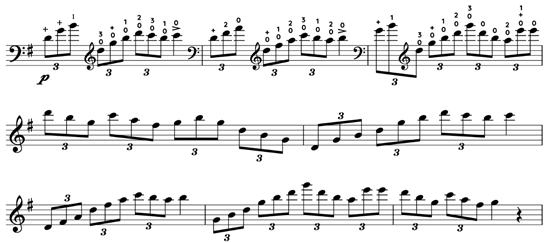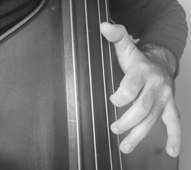
Volume 16, October 2022
|
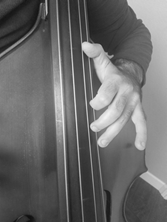 Picture 8a |
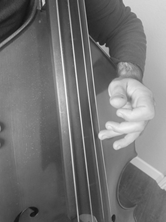 Picture 8b |
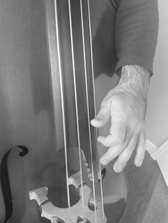 Picture 8c |
It is helpful to pay attention to the bow angle while playing vertical harmonics. If the bow's tip is facing downward, it veers toward the bridge, but it swerves toward the fingerboard if its tip is facing upward. Picture 9a is the suggested bow angle for ascending harmonic arpeggios movement and 9b is for the descending harmonic arpeggios.
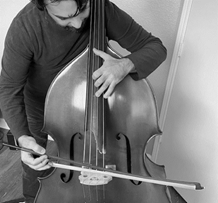 Picture 9a |
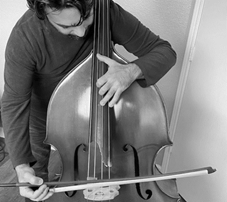 Picture 9b |
Finally, the following exercises (Exercises 11, 12, 13, and 14) will contribute to the memory of the left hand, the internalization of the position transition motion, and the execution of the whole arpeggio by muscle memory.

Exercise 11. Irmak Sabuncu, Exercise for Harmonic Arpeggios

Exercise 12. Irmak Sabuncu, Exercise for Harmonic Arpeggios

Exercise 13. Irmak Sabuncu, Exercise for Harmonic Arpeggios

Exercise 14. Irmak Sabuncu, Exercise for Harmonic Arpeggios
Horizontal Playing in Harmonics
Example 5 shows the section from the concerto's second movement as a sample of playing the song-like horizontal harmonics.

Example 5. Dragonetti, Concerto in A Major, 2, mm. 53–60
The general problems in lyric harmonic playing that evoke the whistle are as follows:
- The bow might not be parallel to the bridge (bow angle)
- The bow position might not be close enough to the bridge (bow placement)
- The left-hand position might not be stable, causing frequent problems during string crossing
Considering these potential problems, Exercises 15 and 16 will promote awareness of the right hand and describe the left hand's position for each note.

Exercise 15. Irmak Sabuncu, Exercise for Harmonic Arpeggios

Exercise 16. Irmak Sabuncu, Exercise for Harmonic Arpeggios
Exercises 17 and 18 additionally include string crossings in harmonic playing. If the third finger is not long enough, playing the D on the G string (second finger) and C on the D string (third finger) can be tricky. In this case, tilting the left hand as far left as possible and holding it horizontal to the bridge will expand the range of the third finger.

Exercise 17. Irmak Sabuncu, Exercise for Harmonic Arpeggios

Exercise 18. Irmak Sabuncu, Exercise for Harmonic Arpeggios
2. Bow Stroke Types and Their Practice Suggestions in the Piece
6. Further Utilization Beyond Dragonetti
Sarah Lahasky, Editor
Editorial Board
Kathleen Horvath
Andrew Kohn
Shanti Nachtergaele
Fiona M. Palmer
Tae Hong Park
Sonia Ray
Phillip Serna
Usage Guidelines
